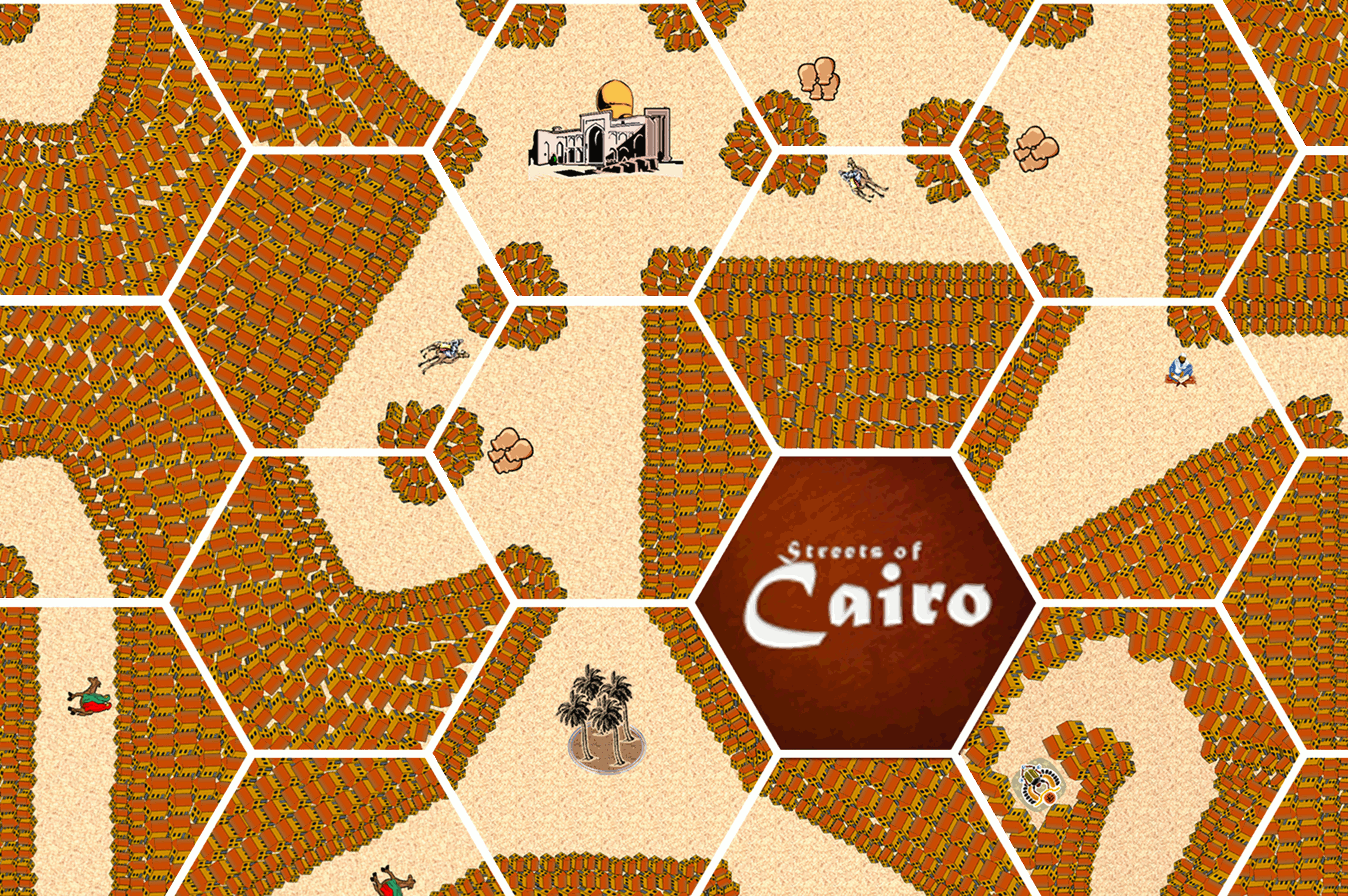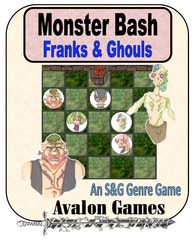
Streets of Cairo
-
Description
A very strategic tile laying and area control game that is highly interactive. The rules are easy to learn, winning requires cunning and clever play.
What treasures lay within the undiscovered Tomb of Akhenaton? Its location is rumored to be contained in a great mosaic created by those that worshiped the legendary pharaoh. Pieces of this mysterious and valuable mosaic have been hidden for ages in Egypt's greatest city. Can you lead your team of archeologists to make the discovery of a lifetime?
Players place city tiles to form the map of old Cairo and secure mosaic pieces known to be found in its three great mosques. As the city is developed, the players will reveal hidden followers, temples and leaders in the "Cult of Akhenaton." These hidden features are scored both during in-game play and the final "end game" round. Only with a carefully planned strategy and well execute tactics will the player be able to amass the largest collection of mosaic pieces and reveal its hidden secrets.
Streets of Cairo is an area control game played with tiles. The objective of the game is to accumulate the largest number of mosaic pieces (victory points), roughly 1/3 of the scoring is in-game and 2/3 is determined at game end.
The most important (and often difficult to grasp) concept of the game is City Blocks. City Blocks are the areas in Streets of Cairo, they are formed during the game by laying tiles, and are controlled by players “discovering” temples and leaders. A City Block is a contiguous area of buildings separated by the streets, at the end of the game they will look like islands of buildings in the city that you have built. The End Game Phase Player Aid is a good place to see what the board will look like after tiles have been laid, and provides several examples of City Blocks. Generally the larger the City Block, the greater its value. An important strategy of the game is to maximize the size of the City Blocks that you plan on claiming.
Laying tile forms the City Blocks, but it’s the discovery mechanism that allows a player to control and score Mosaic Pieces from them. There are 2 methods of discovery; Temples and Leaders. Temples are found when a player lays tiles so that they make a tile location unplayable. Leaders are found when a player lays a tile so that at the end of their turn it is completely surrounded. Archeologists (meeples) are placed to designate ownership of these discoveries. Each player also has a Player Temple which they can place during their turn, once played the Player Temple acts in the same way as a discovered Temple. A Temple is fixed location, but it is the most powerful way to control a City Block. Leaders are mobile, they are moved during the end game phase but aren’t quite as powerful as Temples.
Archeologists can also be placed as Roadblocks, temporarily preventing your opponents from accessing a segment of the city. Roadblocks have a weak effect on controlling a City Block and can be removed by either yourself or an opponent by playing the Special Action Card. Strategically balancing the roles and placement of your archeologists is the critical tactic in determining the game winner.
City Blocks are scored only once, at the end of the game. Every Building Segment in the City Block is worth one Mosaic Piece. However there are a limited number of Follower tiles that reduce that end game score.
Follower tiles score in game, by giving the players who played them Mosaic Pieces and adding Mosaic Pieces to the scorable Mosques located at each corner of the map of Old Cairo.
Completing a Mosque occurs when a player lays tiles so that the Mosque is completely surrounded at the end of their turn. When a Mosque is completed the player collects all the Mosaic Pieces on that Mosque. Followers and Mosques are the only forms of in-game scoring.
There is a special Temple (the “Cult of Akhenaton Temple”) that is very powerful, and controlled in the same way as completing a Mosque.
Turn order is determined by holding the Obelisk. Ownership of the Obelisk is determined at the beginning of each turn by bidding the maximum number of tiles the player will play during their turn. The Obelisk also changes during the turn by play fewer tiles than any other player during that turn. Controlling the Obelisk can be strategically advantageous when Completing a Mosque or the “Cult of Akhenaton Temple.”
The game moves to the end game phase when all Mosques are Completed (or in the 4 player variant when all tile locations in Old Cairo have been played.) Start the end game phase by removing all Leaders, and placing them on the side. Then you take turns placing them. You can place them on a block that doesn't have a Temple, on one of your opponent's City Blocks (to try to win control), or on your own (to defend them). After you finished placing all the Leaders you score only the blocks that have either a Temple or Leader on them and award those Mosaic Pieces to the player controlling them. All Mosaic Pieces are now totaled to determine the winner.
-
Details
Ages: 10 and upCategory: City Building, MythologyDesigner: Travis WorthingtonFamily: Cities: Cairo, Country: EgyptMechanics: Area Control / Area Influence, Tile PlacementPublisher: (Unpublished)Time: 45 minutesYear: 2009













